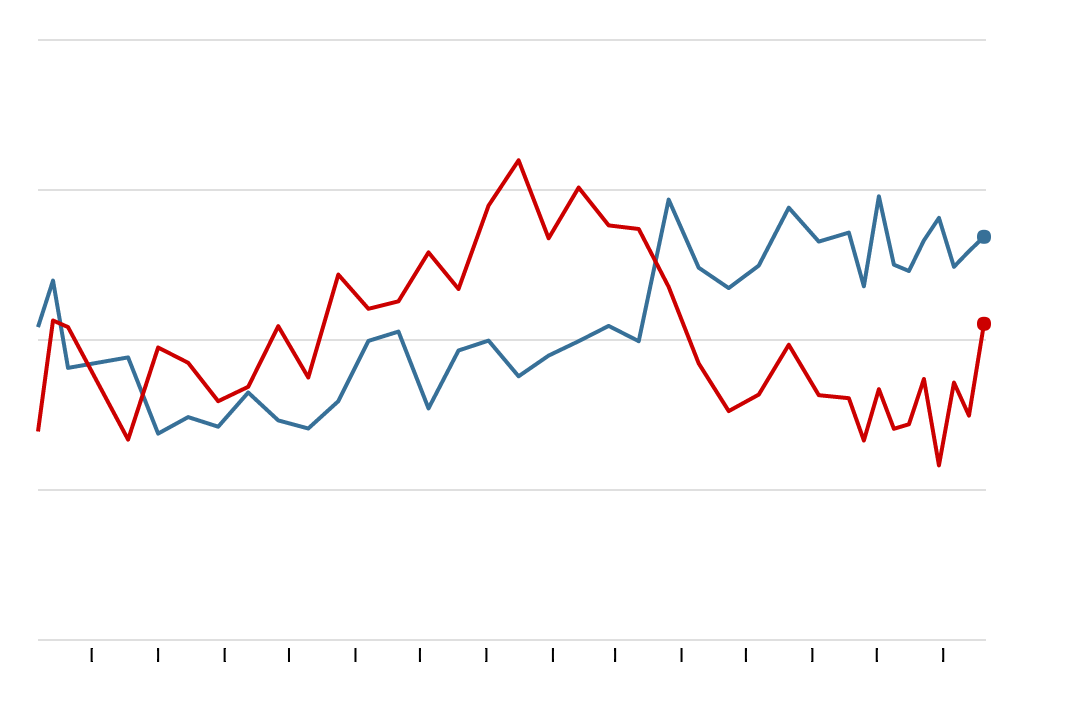U.S.-China Relations: Breakdown And The Looming Cold War

Table of Contents
Economic Competition and Decoupling
The economic rivalry between the U.S. and China is a primary driver of the current tensions. This isn't merely about trade disputes; it's a battle for technological dominance and economic influence, leading to a push for economic decoupling. The escalating trade war, initiated with the imposition of tariffs, has significantly impacted both economies.
- Impact of tariffs and trade restrictions: Tariffs have disrupted global supply chains, increased consumer prices, and hindered economic growth in both countries. Retaliatory measures have further exacerbated the situation.
- Intellectual property theft accusations: Accusations of intellectual property theft and forced technology transfer have fueled mistrust and escalated tensions, prompting the U.S. to take action to protect its technological advantage.
- Supply chain diversification and "friend-shoring": The U.S. and its allies are actively pursuing supply chain diversification, moving away from reliance on China and towards "friend-shoring," building resilient supply chains within trusted alliances. This strategy aims to reduce vulnerability to geopolitical risks and economic coercion.
- Growth of protectionist policies: The rise of protectionist policies globally, driven by both the U.S.-China trade war and other factors, threatens the rules-based international trading system and hampers global economic growth.
- Specific examples: Restrictions on companies like TikTok and Huawei highlight the growing concerns about national security and technological dominance, driving further decoupling efforts.
Geopolitical Rivalry and Military Buildup
Beyond economics, geopolitical rivalry is a major source of friction. Competition for global influence is playing out in several key regions, including the South China Sea and the Taiwan Strait. This competition is accompanied by a significant military buildup on both sides.
- China's increasing military assertiveness: China's increasing military assertiveness, including its actions in the South China Sea and its modernization efforts, is perceived as a threat to regional stability and U.S. interests.
- U.S. pivot to the Indo-Pacific: The U.S. has significantly increased its military presence and engagement in the Indo-Pacific region, strengthening alliances and seeking to counter China's influence.
- Military exercises and naval deployments: Frequent military exercises and naval deployments by both countries increase tensions and the risk of miscalculation, raising the stakes in the region.
- Cyber warfare and information operations: Cyber warfare and information operations are increasingly being employed by both sides, adding another layer of complexity to their strategic competition.
- Impact on regional stability: These actions have significantly increased regional instability and heightened the risk of conflict, with far-reaching global consequences.
Ideological Differences and Human Rights
Fundamental ideological differences and human rights concerns further exacerbate U.S.-China relations. The contrast between the U.S.'s promotion of democratic values and China's authoritarian model creates a deep chasm. Concerns about human rights abuses in Xinjiang, Hong Kong, and Tibet further strain the relationship.
- Impact of differing political systems: The differing political systems make cooperation on global issues challenging. Disagreements on governance, human rights, and international norms hinder joint efforts.
- Human rights abuses: Allegations of human rights abuses, including the treatment of Uyghurs in Xinjiang and the crackdown on democracy in Hong Kong, have drawn international condemnation and fueled tensions.
- International pressure and sanctions: International pressure and sanctions imposed on China over human rights issues further damage the relationship and limit cooperation.
- Impact on public opinion: Public opinion in both countries is increasingly polarized, making constructive dialogue and compromise more difficult.
- Challenges to diplomatic efforts: These fundamental disagreements create major hurdles for diplomatic efforts and conflict resolution.
The Potential for a New Cold War
The escalating tensions between the U.S. and China bear some resemblance to the original Cold War, although significant differences exist. The comparison highlights the gravity of the current situation and the potential for a new era of geopolitical rivalry.
- Nuclear arsenals and military capabilities: While neither power desires a direct military confrontation, both possess significant nuclear arsenals and advanced military capabilities, making the potential for conflict incredibly dangerous.
- Role of alliances: Both countries are actively building alliances and partnerships, creating competing spheres of influence and increasing the risk of proxy conflicts.
- Proxy conflicts: The potential for proxy conflicts in various regions of the world adds to the complexity and risk of escalation.
- Impact on global trade and economic stability: A new Cold War would severely disrupt global trade and economic stability, with potentially devastating consequences for the world economy.
- Pathways to de-escalation: Despite the daunting challenges, exploring pathways to de-escalation through diplomacy, dialogue, and confidence-building measures remains crucial.
Conclusion
The deterioration of U.S.-China relations is a complex issue driven by a confluence of factors: intense economic competition, escalating geopolitical rivalry, and deep ideological differences, including concerns over human rights. The potential for a new Cold War is a very real possibility, with potentially catastrophic consequences. Understanding the complexities of U.S.-China relations is crucial for navigating the uncertain future. Stay informed about this critical relationship and engage in thoughtful discussion to prevent further escalation. Learn more about the intricacies of U.S.-China relations and its global impact by exploring additional resources on this critical topic. The future of global stability hinges, in part, on the ability to manage and, hopefully, improve these increasingly fraught U.S.-China relations.

Featured Posts
-
 The Bof A View Why Current Stock Market Valuations Arent A Worry
Apr 22, 2025
The Bof A View Why Current Stock Market Valuations Arent A Worry
Apr 22, 2025 -
 Obamacares Future Hangs In The Balance Trumps Supreme Court Argument And Rfk Jr S Political Prospects
Apr 22, 2025
Obamacares Future Hangs In The Balance Trumps Supreme Court Argument And Rfk Jr S Political Prospects
Apr 22, 2025 -
 The Human Cost Of Trumps Economic Goals
Apr 22, 2025
The Human Cost Of Trumps Economic Goals
Apr 22, 2025 -
 Who Will Bear The Brunt Of Trumps Economic Policies
Apr 22, 2025
Who Will Bear The Brunt Of Trumps Economic Policies
Apr 22, 2025 -
 Pope Franciss Papacy Its Influence On The Next Papal Election
Apr 22, 2025
Pope Franciss Papacy Its Influence On The Next Papal Election
Apr 22, 2025
